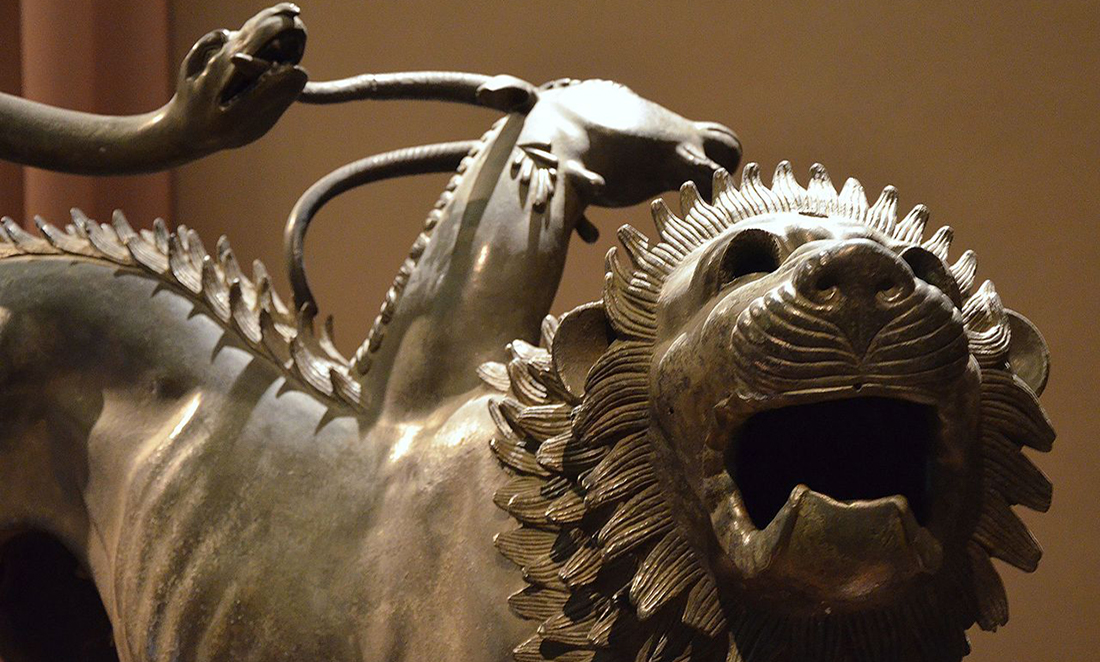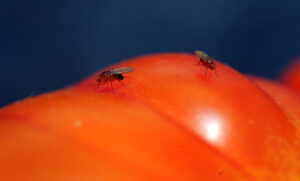In every part of your body—from the brain cells inside your head and the cells making up all your organs inside your body to the genome within each cell—there are bits and pieces that originally came from someone (or something) else.
These foreign cells and genes are found in everyone, and their role is yet to be fully understood.
So, in case you are wondering, here are some ways in which you are a chimera.
A genomic chimera
Let’s start with your genome. Rather than being a unique feature of our bodies, our genome is not entirely our own. We share bits and pieces with other species.
Back in the day, it seems like our ancestors really liked to mix things up.
For instance, people with non-African ancestry share as much as 2% of their genome with Neanderthals—ancient human cousins who lived some 30,000 years ago.

Some tribes in Oceania share up to 5% of their genome with Denisovans—a mysterious group of ancient humans who lived 80,000 years ago in Siberia, Russia. But it doesn’t stop there.
Viruses are also an integral part of our genome. For example, pieces of one type of viruses, called retroviruses, are present in more than 8% of our genome. This is quite a number, especially if you realise there are about 19,000 protein-coding genes, or just a bit over 1% of our genome.
Scientists think some of these viruses have been in our genome for quite a while, even dating back to 30 million years ago, way before we were considered officially human. It seems that some of these ancient viruses were acquired by our chimp ancestors before our own species formed and stuck around until our times.
Our patchwork make-up doesn’t stop with our genome. Our cells, too, have a mixed up story tell.
A chimera of cells
Did you know that some of your cells still live in your mum’s body and that some of your mum’s cells are still found in you? Yeah, it is a bit mind boggling.
The condition is called microchimerism, and it has been known for about 100 years. It has been studied more meticulously in the past decades, but there is still no consensus regarding what these microchimeric cells do in the body. But it seems to happen during all pregnancies in both directions.
“Maternal microchimerism is very common, likely to occur in every individual and occurs in every known mammalian species that has been studied (mice, non-human primates and so on). Same with fetal microchimerism—these cells have been found for decades in mothers after pregnancy, so these cells likely persist in individuals for life,” says Dr Sing Sing Way, an infectious disease paediatrician at Cincinnati Children’s Hospital.
The piece of you in mum
It all starts when you are a tiny baby inside your mum, connected via the umbilical cord. While pregnant, your mum’s blood carries not only food and oxygen, but also cells from both of you get exchanged.
The idea is that the presence of these baby cells helps your mum’s immune system realise that her baby is not a dangerous bug that needs zapping but a friendly bug. But there is more.

After you were born, some of these cells stay around in your mum’s body, settling in different organs, and some studies have shown that these chimeric cells may actually be helping your mum with future pregnancies. In some cases, it has been shown that women carrying microchimeric cells lived for longer than their counterparts lacking cells.
One intriguing link involves cancer. Several studies have found these microchimeric cells in tissues affected by different types of cancer, like breast, skin and cervical cancer. The idea is that these cells are there to help fight the tumour. But it could go both ways, as scientists don’t know yet whether these cells are friend or foe.
“In general, your cells participate in repair tasks of your mum’s body … although this can sound helpful, we’re not sure it always is,” says Associate Professor Kiarash Khosrotehrani at the University of Queensland.
The observation that these microchimeric cells are less common in women with different types of cancers seems to support the idea of a protective role for these cells. But it is all speculative, as there is no mechanism on the table yet.
The piece of mum in you
The same applies the other way around. While you were in your mum’s belly, a small number of cells from your mum made it all the way into your body. And, even while you were breastfeeding from mum, you likely received a few cells from her along with the tasty milk.
All these ‘mum cells’ stayed with you, settling in different places. Now studies suggest that these cells may be playing important roles. One study in mice, for example, found that carrying these microchimeric cells resulted in reproductive benefits for the female offspring.
Other benefits reported for these cells include improved tolerance of transplanted organs. Microchimeric cells have also been linked to type 1 diabetes and scleroderma, a condition characterised by hardening of the skin, but further research is needed to clarify their role.
So, in a way, you are not just you. You are a crazy mix of different persons and species, which all together make up who you are.









